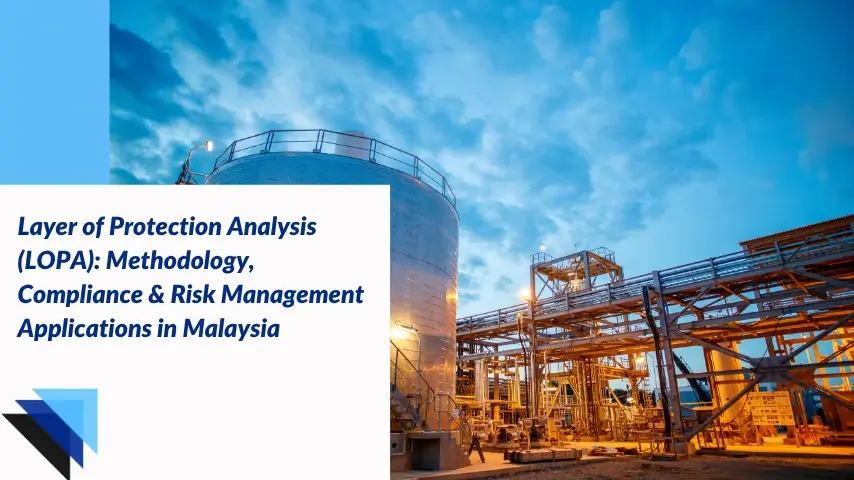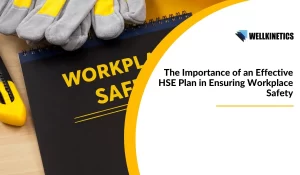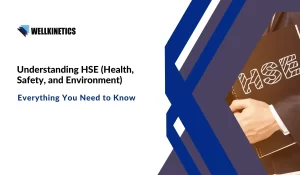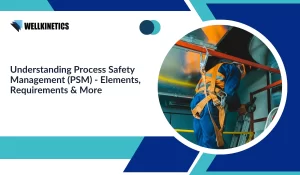Layer of Protection Analysis (LOPA) is an instrumental tool in risk assessment and risk management that bridges the gap between qualitative risk matrix approaches, like Process Hazard Analysis and Hazard and Operability study (HAZOP), and fully quantitative methodologies.
Highly valued in high-hazard industries including chemical plants, petrochemical plants, and pharmaceutical plants, LOPA enables organizations to systematically evaluate process safety, analyze initiating events, and implement independent protection layers to prevent harmful outcome events. The ability to define and assess safety integrity levels (SIL), integrity levels of safety systems, and the probability of failure on demand (PFD) is vital for facilities that handle hazardous scenarios and flammable liquids.
Within Malaysia’s industrial sector, this technique has gained prominence not only for its effectiveness in safeguarding process loops and optimizing safety system performance, but also for ensuring regulatory compliance under stringent local and international safety standards. Utilizing LOPA sessions to perform barrier management, incident investigation, and functional safety evaluations supports the continuous improvement of safety management systems and the achievement of tolerable risk levels.
This article provides a comprehensive overview of LOPA, including its methodology, relevance to Malaysian industries, compliance applications, practical industry examples, and challenges.
Need to Strengthen Your Risk Management Strategy?
Leverage LOPA to optimize safety systems and ensure compliance in high-risk industries.
- What Is Layer of Protection Analysis (LOPA) and How Does It Improve Industrial Risk Management?
- What is the Layer of Protection Analysis (LOPA) Methodology?
- How Does LOPA Help Companies Meet Regulatory Compliance in Malaysia’s High-Risk Industries?
- How Is Layer of Protection Analysis (LOPA) Applied in Risk Management Across Process Industries?
- What Are the Key Challenges and Limitations of Using LOPA in Risk Management?
- How Wellkinetics Can Help
What Is Layer of Protection Analysis (LOPA) and How Does It Improve Industrial Risk Management?
Layer of Protection Analysis (LOPA) is a semi-quantitative risk assessment tool widely implemented in industries like oil and gas, chemicals, fuel storage sites, and manufacturing. It systematically analyzes potential hazardous scenarios, quantifies frequencies and probabilities, and determines whether there are sufficient independent protection layers, such as Relief Devices and instrumented safety systems, to reduce the probability of occurrence and likelihood of high-consequence scenarios. The primary aim of LOPA is to strike a balance between operational efficiency, effective risk management, and enhanced safety protocols within Safety Management Systems.
LOPA is often positioned after a preliminary hazard evaluation, such as a Hazard and Operability study (HAZOP) or Process Hazards Analysis, serving as a bridge from qualitative assessments to rigorous quantitative safety analysis. Independent protection layers (IPL), safety functions, and safety system performance are central to deriving an acceptable level of risk. LOPA facilitates the evaluation of initiating event frequency, and Probability of Failure on Demand (PFD) is critical in LOPA calculations and SIL studies.
Why Is Layer of Protection Analysis (LOPA) Important for Industrial Safety and Compliance in Malaysia?
LOPA has gained significant importance in Malaysia as industries undergo heightened scrutiny to comply with safety regulations such as the Occupational Safety and Health Act 1994 (OSHA) and the Control of Industrial Major Accident Hazards (CIMAH) Regulations 1996. High-risk sectors such as oil refining, chemical manufacturing, and energy production benefit significantly from LOPA’s ability to systematically assess risks and mitigate harmful outcomes.
Industries across Malaysia, such as chemical process plants and pharmaceutical plants, must address complex accident scenarios stemming from factors such as initiating events, infection probabilities, and process loops that carry flammable, toxic, or explosive materials. LOPA provides a structured method for meeting functional safety and compliance requirements, incorporating a range of protection layers, from automated Safety Instrumented Systems and Relief Devices to procedural measures and physical barriers. With its ability to quantify risk levels, define target risk, and establish tolerable risk levels, LOPA is a key factor in achieving robust risk management and regulatory compliance.
What is the Layer of Protection Analysis (LOPA) Methodology?
Layer of Protection Analysis (LOPA) follows a structured, iterative process that helps organizations identify hazards, evaluate accident scenarios, and assess the effectiveness of safety measures and independent layers of protection. Integrating barrier management practices, LOPA can be especially useful in safeguarding process loops and ensuring functional safety in chemical plants and oil and gas facilities.
LOPA is executed through a series of well-defined stages, each contributing to comprehensive risk analysis:
1. Identifying Initiating Events
An initiating event is any occurrence that could set off a hazardous scenario, ultimately leading to a harmful outcome. The initiating event frequency must be determined as part of the hazard identification process, whether it stems from mechanical failures, human errors, or external events. The probability of occurrence is assessed using visual risk assessment, fault trees, and event trees to analyze cause-and-effect relationships in the process.
For instance, in a petrochemical plant in Malaysia, initiating events could include equipment malfunction or deviation from tolerant process specifications, leading to high-consequence scenarios like leaks of flammable liquids or uncontrolled chemical reactions.
2. Defining Layers of Protection
Layers of Protection in LOPA refer to safety functions and barriers designed to prevent accident scenarios and protect process safety. These layers can include:
- Safety Instrumented Systems (SIS): Automated controls (instrumented safety system) with defined safety integrity levels (SIL) that activate safety actions when predefined limits are exceeded.
- Relief Devices and Physical Barriers: Pressure relief valves and containment vessels, crucial for mitigating harmful outcome events.
- Procedural Controls and Operator Training: Standard Operating Procedures (SOPs) that act as independent layers, supported by effective Safety Management Systems.
- Safety Instrumented Functions: Critical actions provided by SIS depending on risk assessment results and safety specification requirements.
Each protection layer is evaluated for its degree of independence, reliability, and capability to reduce the probability of failure or harmful consequences to an acceptable level.
3. Assessing Risk Tolerance
Organizations must determine the tolerable risk levels, ensuring the remaining risk after all protection layers meets company, industry, and regulatory targets. A safety analysis includes considering incident investigation findings, historical data, and sensitivity analysis. For example, a company may define that accident scenario risks exceeding a frequency of 1 in 10,000 operations (initiating event frequency) are not acceptable.
4. Quantifying Risk Reduction
Each independent protection layer (IPL) is evaluated for its integrity levels and ability to mitigate risk. The Probability of Failure on Demand (PFD) is calculated for each IPL or Safety Instrumented Function. For example, a safety instrumented system with low probability of failure will significantly reduce event frequency, supporting the achievement of tolerable risk levels and minimizing the severity of consequences.
Advanced LOPA calculations, often supported by specialized software tools, allow practitioners to model risk reduction, integrating management of change, and maximizing the value of independent layers.
5. Calculating Residual Risk
Residual risk is the risk remaining after all IPLs and other safety measures are considered. A visual risk assessment and risk matrix are often used to communicate current and residual risk levels to stakeholders. Results are compared to target risk and acceptable levels, and if the risk remains high, additional safeguarding process loops, enhanced safety system performance, or new safety specifications may be implemented.
What Tools Are Used to Support Layer of Protection Analysis (LOPA) in Industrial Settings?
LOPA practitioners rely on a suite of tools to support risk assessment, safety analysis, and documentation, including:
- Fault Trees and Event Trees: Help model frequencies and probabilities of complex accident scenarios.
- Software for LOPA Sessions: Streamlines safety analysis, safety specification, and reporting across chemical process plants, fuel storage sites, and pharmaceutical facilities.
- Barrier Management Tools: Enable continuous improvement and robust safety system performance.
Need Help Applying the Full LOPA Methodology?
From initiating events to residual risk, we walk you through every LOPA stage.
How Does LOPA Help Companies Meet Regulatory Compliance in Malaysia’s High-Risk Industries?
Adhering to regulatory compliance is crucial for companies operating in Malaysia’s high-risk industries, especially those dealing with hazardous chemicals, flammable liquids, or high-consequence process safety scenarios. The regulatory landscape mandates that industrial organizations implement comprehensive risk assessment methods, including Layer of Protection Analysis, to address hazardous scenarios and safeguard both people and the environment.
Strict laws and standards are in place to protect workers, the public, and the environment from industrial hazards. Layer of Protection Analysis (LOPA) is an effective method that helps organizations address these regulatory requirements, ensuring that safety practices, independent protection layers, and safety instrumented functions are robust, transparent, and aligned with national and international policies. Compliance with frameworks like the Occupational Safety and Health Act 1994 and the CIMAH Regulations 1996 requires companies to establish a systematic hazard identification process, conduct regular safety performance reviews, and demonstrate they have achieved the necessary integrity levels through LOPA assessments.
Which Malaysian Regulations Are Driving the Adoption of LOPA in Industry?
Malaysia’s regulatory framework emphasizes workplace safety through a combination of prescriptive and outcome-based standards:
- Occupational Safety and Health Act 1994 (OSHA): Requires employers to systematically identify hazards, perform risk assessment and mitigation, and ensure that all safety measures, such as protection layers and instrumented safety systems, are robust and up to date.
- CIMAH Regulations 1996: Mandate hazard and operability studies (HAZOP), hazard evaluation, Process Hazard Analysis, and layers of protection analysis to minimize accident scenarios and demonstrate that risk levels are managed within tolerable limits.
LOPA, with its ability to integrate functional safety practices, event frequency analysis, and probabilistic safety analysis, aligns seamlessly with these regulatory requirements, enabling organizations to provide clear documentation and visual risk assessment results to regulatory authorities, such as the Health and Safety Executive (HSE).
What Are the Key Compliance Benefits of Using LOPA in Risk Management?
By integrating LOPA into their risk & compliance strategy, organizations can achieve numerous benefits:
- Enhanced Operational Safety: LOPA guarantees that all safety functions and measures, such as Relief Devices, independent layers, and Safety Instrumented Systems, are maintained at optimal performance.
- Reduced Incident Costs: Effective safety analysis and risk management reduce the frequency and severity of harmful outcomes, including downtime, compensation claims, or regulatory penalties.
- Improved Stakeholder Trust: Transparent risk assessments, inspection of safety system performance, and timely updates to safety standards help foster trust with regulators, employees, and the community.
How Does Management of Change (MOC) Support Compliance Within LOPA Frameworks?
Change is inevitable in high-risk industries. Whether introducing new equipment, modifying process loops, or updating safety functions, every change has the potential to introduce new hazards or affect independent protection layers. Integrating a Management of Change (MOC) framework within the layers of protection analysis ensures that risk assessments remain comprehensive, safety analysis is continuously updated, and all IPLs meet rigorous performance and safety specification requirements after changes.
Is Your Facility Audit-Ready?
Let us ensure your safety assessments and documentation meet Malaysian legal standards.
How Is Layer of Protection Analysis (LOPA) Applied in Risk Management Across Process Industries?
Layer of Protection Analysis is a cornerstone for risk management in process industries. By facilitating robust hazard evaluation and continuous assessment of safety system performance, LOPA plays a vital role in minimizing the probability of occurrence of harmful outcome events. The methodology can be deployed across process loops, chemical plants, petrochemical facilities, and oil and gas installations, ensuring that safety standards remain uncompromised even as risk scenarios evolve.
Whether in safeguarding against accidents involving flammable liquids, guiding the development of Safety Instrumented Functions for hazardous chemical storage, or integrating risk assessment across pharmaceutical plants, LOPA delivers actionable insight to support practical safety measures.
RELATED: The Importance of Process Safety in Handling Hazardous Substances
What Are Some Real-World Examples of LOPA Implementation in Malaysian Industries?
LOPA has found practical and impactful applications in a diverse range of industries throughout Malaysia. By addressing unique operational hazards and regulatory demands, LOPA enables organizations to implement targeted safety solutions and reduce the risk of major incidents. Below are illustrative examples of how LOPA is naturally integrated with key risk assessment practices:
- Oil and Gas Facilities: Operators in Malaysia use layers of protection analysis to evaluate initiating events, accident scenarios, and independent protection layers associated with over-pressurization in pipelines. Safety Integrity Level (SIL) studies ensure every safety instrumented system achieves the specified integrity levels, reducing the Probability of Failure on Demand and maintaining compliance with regulations. Risk matrix and frequency analysis guide the prioritization of safety actions for critical process loops.
- Chemical Plants and Petrochemical Plants: LOPA is essential for evaluating reaction hazards, estimating frequencies and probabilities linked to initiating events, and designing instrumented safety systems that meet functional safety and safety specification requirements. Incident investigation and sensitivity analysis further optimize risk management and identify opportunities to enhance independent layers.
- Power Generation and Pharmaceutical Plants: Facilities employ LOPA to assess the safety performance of turbine systems, manage hazardous scenarios, and implement safety measures such as Relief Devices and automated safety functions. The hazard identification process and regular evaluation of risk levels ensure compliance with both internal and external safety standards.
RELATED: From Hazard to Harmony: Achieving Process Safety in the Pharma Sector
How Does LOPA Enhance the Communication of Risk in Industrial Safety Management?
A notable advantage of LOPA is its ability to communicate risk assessment results in a numerical, visual, and transparent manner. Risk matrix, LOPA calculations, and visualization tools allow organizations to translate complex high-consequence scenarios and frequencies into actionable insights. By showing the impact of each safety function, probability of failure, and the effectiveness of safeguarding process loops to stakeholders (including board members, staff, and regulators) companies can garner support for operational decisions and the allocation of resources to continuously improve safety levels.
What Are the Key Challenges and Limitations of Using LOPA in Risk Management?
Understanding the challenges and limitations of Layer of Protection Analysis is essential for organizations aiming to maximize its value. LOPA sessions, though powerful, require a significant investment of time, expertise, and resources, particularly as risk scenarios, process loops, and operational complexities increase. Recognizing and addressing these challenges ensures that layers of protection analysis continues to contribute to effective risk management and safety assurance.
What Are the Intrinsic Limitations of Layer of Protection Analysis (LOPA)?
While LOPA drives improvement in process safety, it is not without limitations:
- Complexity of Application: Accurate hazard evaluation requires deep domain knowledge, advanced risk assessment skills, and familiarity with all relevant safety standards. Validation of independent protection layers and Safety Instrumented Functions may become increasingly complex as process loops and control systems grow.
- Resource Intensity: The implementation of LOPA (including data collection for frequency and probability analysis, evaluation of safety integrity levels, and barrier management documentation) can be costly and time-consuming. Small businesses and startups may face challenges scaling LOPA methodologies across their operations.
- Scalability Issues: For enterprises with multiple sites, such as chemical or fuel storage installations, integrating LOPA and ensuring uniform safety system performance across all plants can be demanding, especially in the presence of evolving regulatory requirements and safety standards.
How Can Organizations Overcome the Challenges and Limitations of LOPA?
To address limitations, organizations increasingly use automation, advanced LOPA calculations, and integrated safety management systems to streamline risk assessment and reporting. The Management of Change (MOC) protocol supports continuous updates to hazard evaluation, ensuring safety specification, tolerable risk levels, and acceptable level of risk are maintained even as operational environments evolve. Utilizing sensitivity analysis and incident investigation further supports the ongoing improvement of functional safety and the effectiveness of each protection layer.
Concerned About LOPA Complexity or Cost?
We help simplify LOPA for SMEs with tailored packages and cost-effective solutions.
How Wellkinetics Can Help
Wellkinetics is an industry leader in process safety and risk management. Their specialized services enable Malaysian enterprises to adopt LOPA efficiently while aligning with local regulations and global standards. Key offerings include:
- Comprehensive Training: Wellkinetics provides in-depth training on LOPA methodology to build internal expertise.
- LOPA Workshop Facilitation: Hands-on support in conducting and documenting LOPA sessions for accurate, actionable outcomes.
- Regulatory Guidance: Expert consultants assist organizations in achieving compliance with OSHA and CIMAH regulations.
- Management of Change (MOC) Integration: Wellkinetics offers tailored solutions to integrate MOC protocols into LOPA, ensuring that all safeguards remain effective during operational changes.
By working with Wellkinetics, companies gain not only technical expertise but also peace of mind, knowing their operations align with the highest safety standards.
Learn more about our process safety management consulting services.




